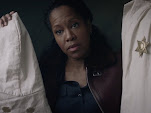Proposal for Final Paper: Redlining
This class began under very unusual times with COVID-19 and has come to an end too soon. I want my final paper to not only be an interesting topic, but also allow me to better understand how factors related to social issues in education affect my teaching career everyday. For anyone who has read my blog knows that I am a fierce advocate for the betterment and continuation of public education. I would ask for constructive feedback as I move ahead in my research phase. I chose to talk about the permanent social impact that " redlining " has had on communities of color through funding issues and economic segregation. I am looking to research the area where I teach, which is Central High School in Providence. Further Questions for Thought 1. Who was the power behind redlining ? 2. Who or what specifically did redlining benefit? Who or what did it harm? If so, how? 3. What is the everlasting impact of redlining ? 4. Did redlining lead to gentrification? If so, how? ...



